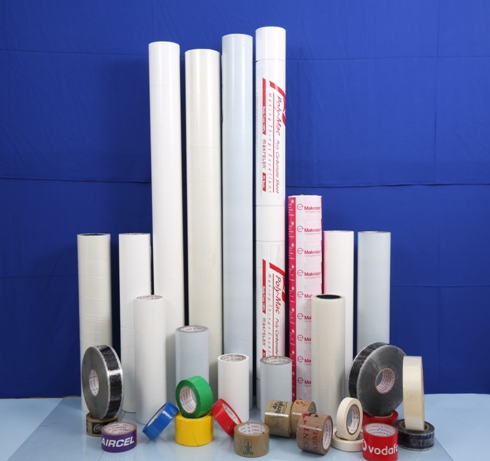High quality surfaces and materials require high grade protection and care in order to preserve their value as well as looks. This is where a surface protection film comes into the picture. It is a special kind of polymer film which has non transfer type specialty adhesive on one side, with varied tack strengths depending on the kind of surface to be applied on. It is also referred to as masking film or guard film.
Easily Removable : Clean, stain free removal, even after application for extended time period.
Easy Application : Controlled unwinding allows for application either manual or automatic.
High Speed Lamination : Can be laminated on any surface matching the speed of the line.
Printable : Can be printed with any logo, instructions etc.
Masking film or a surface protection is a protective film designed to prevent abrasion, scratching, and damage to sensitive surfaces caused due to indoor and outdoor construction processes. Furthermore it protects high class surfaces from damage during transit from the factory floor to the end consumer.
An enormous amount of time money and labor is spent by the manufacturer on developing and perfecting the quality of a product, but a scratch here and there during transit or installation can make a product look worn out and old. Thus to preserve the magic of your product this surface protection film comes in handy as it helps retain the original looks and quality of the surface.
Masking film is a contemporary method of surface protection being used by the construction industry for preservation of interior and exterior surfaces. Due to its easy application and proper coverage it protects the surfaces from paint spills, cement debris, dust etc.
As this film gives proper protection to the exterior surface it is applied on, it has become a rage with almost all products such as electronics, home appliances & industrial equipments.

For the past decades we have been using conventional methods of surface protection during transit and renovation, wherein the laborers were employed to cover the floors with plastic sheets and to stick newspapers on the wall surfaces to prevent them from damage like paint sprays and scratches. But practically thinking, these conventional methods are in fact more time consuming and are not totally damage resistant, thereby further burning a hole in our pockets and pushing the timeline further.
In case the surfaces are left bare, the post construction process becomes tedious, since it requires proper cleaning by expensive solvents, making the process longer and increasing the labour hours.
Thus the surface protection film ranks much higher than the conventional methods in every respect, be it time, cost or damage control.